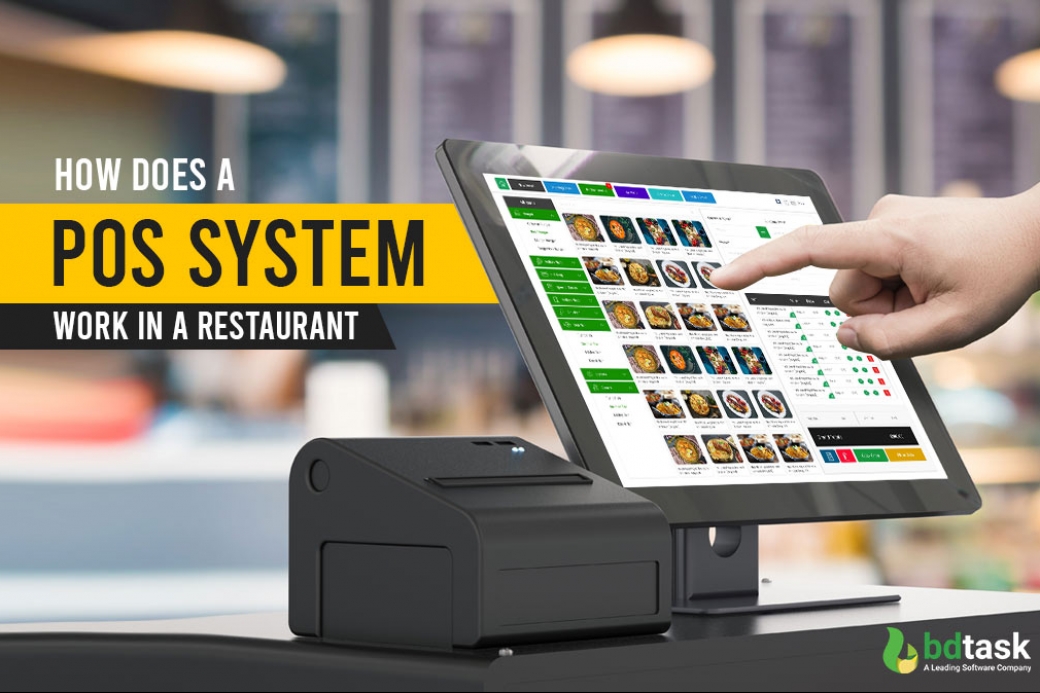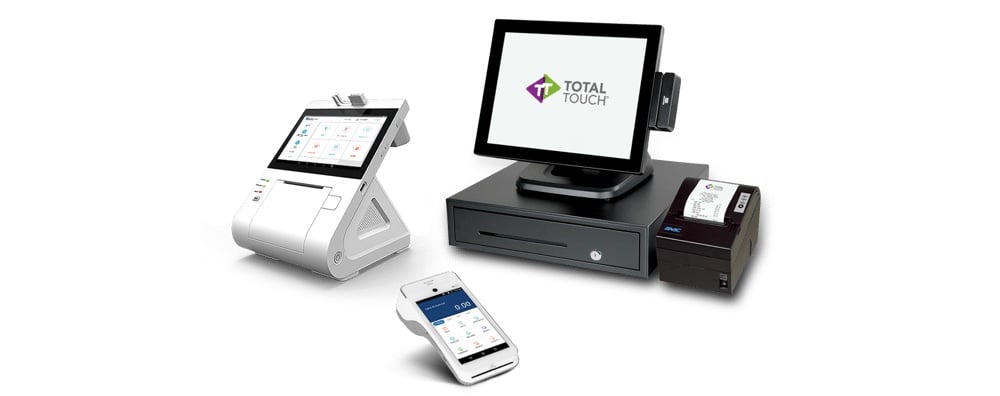Clover POS : The Point-Of-Sale System Enhances Checkout Processes Effectively
Unpacking the Power Behind Point of Sale Systems
Have you ever paused to consider what happens the minute you swipe your card or tap your phone at a checkout? That flash triggers a waterfall of processes, orchestrated by sophisticated Point of Sale Systems. Far from being mere sales register, these systems act as the digital heart beat of retail operations, weaving together sales information, inventory, and consumer interaction.
Envision a busy café where the barista manages orders, payments, and commitment rewards all at as soon as. The POS system isn't simply a tool-- it's the hidden partner ensuring every coffee is represented, every discount rate used properly, and every consumer leaves satisfied. Point of Sale. It's the distinction in between mayhem and seamless service
Core Functions That Drive Effectiveness
- Sales Deal Management: Tracks each purchase with precision, guaranteeing accuracy in billing and invoices.
- Stock Control: Automatically updates stock levels, signaling when it's time to reorder.
- Client Data Collection: Gathers insights for individualized marketing and loyalty programs.
- Staff member Tracking: Schedules shifts and records hours worked.
Why Does This Matter?
Believe about the last time you waited in a long checkout line. Discouraging? A well-implemented POS system slashes wait times by streamlining payment procedures, reducing human mistake, and syncing sales with backend operations in real-time. It's like having a conductor guiding every note in the symphony of retail.
| Function | Advantage | Effect |
|---|---|---|
| Real-Time Analytics | Instantaneous sales reporting | Better choice making |
| Mobile Compatibility | Checkout anywhere | Boosted customer experience |
| Integrated Payments | Numerous payment choices | Increased sales chances |
Does not it make you question how businesses ever managed without these systems? In a world where every 2nd counts, the POS is no longer simply a convenience-- it's a necessity.
Translating the Celestial Puzzle
When peering into the night sky, have you ever wondered how ancient mariners identified their area without modern innovation? Positional astronomy is the art and science behind that celestial navigation. But why does understanding the precise position of stars and worlds matter? Since even a minute miscalculation can send you miles off course, especially when counting on the stars as your compass.
The Subtle Complexities of Coordinate Systems
One may think the sky is an easy canvas, however it's a vibrant sphere dotted with moving targets. The equatorial coordinate system. Clover POS-- ideal ascension and declination-- mimics Earth's own location, however with a twist. The Earth's axis wobbles, a phenomenon referred to as precession, which discreetly shifts star positions over decades. This requires continuous recalibration. Have you ever observed how Polaris does not always sit exactly at the North Celestial Pole? That's precession at work
Tips from the Observatory
- Use a high-precision chronometer to measure sidereal time precisely; even seconds matter.
- Adjust your instruments regularly to account for climatic refraction, specifically near the horizon.
- Cross-check star catalogs-- different epochs can yield differing collaborates.
- Use software application that consider nutation and aberration for modern precision.
Astounding Anecdote
Think about the tale of a 16th-century navigator who, utilizing basic tools and naked-eye observations, computed his ship's position with unexpected accuracy. His secret? Mastery of celestial mechanics and a deep understanding that the stars, though seemingly fixed, become part of a cosmic dance.
Precision Needs Perseverance
Trying to pinpoint a star without thinking about climatic distortion is like trying to read a book through a frosted window. Even the finest telescopes can be deceived by the environment's fickle layers. Patience, multiple observations, and balancing outcomes often unveil the real positional information. Isn't it fascinating how the sky's apparent stillness masks such elaborate shifts?

Decoding the Essence of Positive Operator-Valued Measures
Imagine attempting to capture a shadow's true shape in a world where light bends unexpectedly. Favorable Operator-Valued Steps (POVMs) carry out a similar task in quantum mechanics-- determining states where classical intuition fails. Unlike the cool sharpness of projective measurements, POVMs permit a richer tapestry of results, weaving likelihoods from operators that aren't necessarily orthogonal. Why opt for the mundane when you can paint with the full palette of quantum possibilities?
Quantum Measurement Beyond Standard Limits
Standard measurements feel rigid, however POVMs offer versatility. In practice, they emerge from coupling a system with an ancilla, then performing projective measurements on the combined system. This read more strategy extends the horizon of what can be observed. Ever questioned how to optimize details extraction without disturbing vulnerable quantum states? POVMs are the key.
- Non-orthogonality: Unlike projectors, POVM elements overlap, making it possible for nuanced detection techniques.
- Completeness: The sum of all POVM aspects equates to the identity operator, guaranteeing total likelihood.
- Physical Realizability: Any POVM can be implemented via Neumark's dilation theorem, linking abstract mathematics to laboratory experiments.
Professional Tips for Browsing POVM Implementation
Handling POVMs in practice isn't trivial. Quantum noise and decoherence sneakily distort your ideal operators. To combat this:
- Design POVMs tailored to your speculative setup-- customization beats one-size-fits-all whenever.
- Use convex optimization algorithms to find the ideal POVM that maximizes details gain for your quantum state discrimination task.
- Keep in mind, the subtle interplay in between operator positivity and measurement completeness governs the trade-off in between precision and disruption.
Hidden Intricacies in POVM Applications
What does it indicate when a POVM component is favorable however not a projector? This subtlety often perplexes newbies however reveals a profound reality: quantum measurements do not need to be sharp to be helpful. In cryptographic protocols, for example, using POVMs instead of projective measurements can boost security by drawing out information more carefully, leaving less traceable disruption.
| Feature | Projective Measurement | POVM |
|---|---|---|
| Operator Type | Orthogonal Projectors | Favorable Semidefinite Operators |
| Measurement Results | Repaired, sharp | Flexible, probabilistic |
| Implementation | Direct on system | Requires supplementary systems |
| Info Extraction | In some cases limited | Optimizable and richer |
Comprehending the Intricacies of Proof of Stake
Picture a world where blockchain validators don't race to fix puzzles but rather stake their possessions, signaling trust and dedication. This is the essence of the Proof of Stake (PoS) mechanism. Yet, below its sophisticated surface area lies a complicated dance of rewards and security measures. Why does staking more tokens increase your possibility to confirm the next block? Since it lines up economic rewards, making efforts to defraud the network prohibitively pricey.
The Subtle Risks of Stake Centralization
One might ask: could a handful of stakeholders subdue a network? The concentration of staked tokens in few hands might skew the decentralization ideal, leading to oligarchic control over block development. This isn't just theoretical; it's a genuine tension in PoS systems. Efficient networks neutralize this by executing systems such as:
- Slashing conditions that penalize malicious stars by seizing staked tokens
- Randomized validator selection to prevent predictability
- Delegated staking designs enabling token holders to turn over others without relinquishing ownership
Expert Pointer: Timing Your Stake
Skilled validators understand that timing can be everything. Joining the staking pool too early or late can affect benefits substantially. Network dates define windows where staking and validation happen-- missing out on these might suggest surrendering earned rewards. Constantly synchronize your staking activity with the network's epoch schedule to optimize yield.
Energy Effectiveness and Security: A Delicate Balance

| Element | Proof of Stake | Evidence of Work |
|---|---|---|
| Energy Consumption | Very little, sustainable | High, resource-intensive |
| Attack Expense | Stake loss, economic disincentive | Pricey hardware and electrical energy |
| Block Finality | Faster due to economic locks | Slower due to probabilistic verification |
Rethinking Security Assumptions
One often ignored aspect is the "absolutely nothing at stake" issue. Validators may be tempted to sign numerous completing chains, offered that it costs them absolutely nothing directly-- unlike Proof of Work where energy expenditure discourages this. Advanced PoS systems resolve this with penalties and checkpointing, ensuring validators stake their track record as much as their tokens. Have you considered how this impacts your rely on a network?
Point of Sale Solutions in North Carolina
North Carolina is a vibrant state known for its diverse economy and rich cultural heritage. With a population going beyond 10 million, it boasts thriving urban centers such as Charlotte and Raleigh, which are centers for finance, innovation, and education. Visitors and residents take pleasure in tourist attractions like the Blue Ridge Mountains, historical websites in Asheville, and the beautiful Atlantic shoreline. The state also has a strong entrepreneurial spirit, making it a perfect environment for companies to embrace effective point of sale systems to enhance operations and improve client experiences.
For skilled recommendations and a complimentary consultation on point of sale solutions, reach out to Brilliant POS. They offer knowledgeable guidance customized to your particular organization requirements.